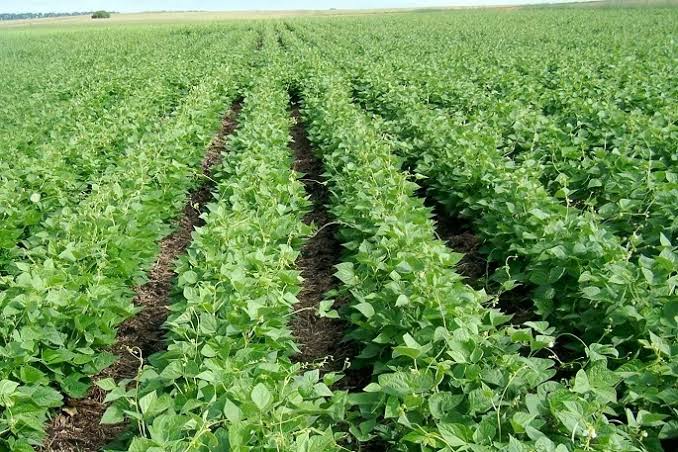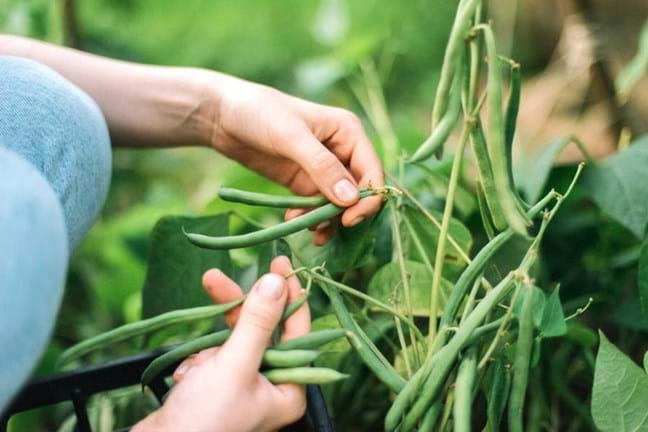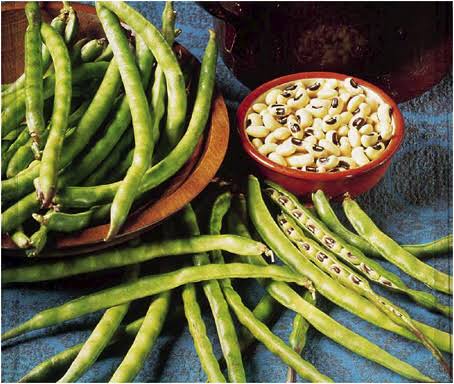Beans are versatile and nutritious legumes that come in various shapes, sizes, and colors. These little wonders of nature are not only delicious but also pack a powerful punch of health benefits.
Beans are a type of plant seed that belongs to the legume family. They are commonly found in cuisines around the world and have been a staple in human diets for centuries. One remarkable feature of beans is their adaptability to different climates and soil conditions, making them a resilient and widespread crop.
In terms of variety, beans come in many types, such as black beans, kidney beans, pinto beans, and navy beans, to name just a few. Each type has its unique taste and texture, adding diversity to culinary experiences. One can find beans used in soups, stews, salads, and even desserts, showcasing their culinary flexibility.
Nutritionally, beans are a powerhouse. They are rich in protein, making them an excellent plant-based protein source for vegetarians and vegans. Additionally, beans are packed with fiber, aiding in digestion and promoting a healthy gut. They are also a good source of complex carbohydrates, providing a sustained release of energy.
Beans are known for their ability to contribute to heart health. They contain soluble fiber that helps lower cholesterol levels, reducing the risk of heart disease. Furthermore, the presence of antioxidants in beans helps combat oxidative stress, contributing to overall cardiovascular well-being.
Moreover, beans play a vital role in managing blood sugar levels. The complex carbohydrates in beans are digested slowly, preventing rapid spikes in blood sugar. This characteristic makes beans a beneficial food for individuals with diabetes or those looking to maintain stable blood sugar levels.
Aside from their health benefits, beans are environmentally friendly. As nitrogen-fixing plants, they have the unique ability to enrich the soil by capturing and converting atmospheric nitrogen into a form that plants can use. This natural process reduces the need for synthetic fertilizers, promoting sustainable agriculture.
In addition, beans are not just humble legumes; they are nutritional powerhouses with a rich history and a wide array of culinary uses. Incorporating beans into your diet can contribute to your overall well-being, providing essential nutrients and promoting a healthier lifestyle. So, the next time you enjoy a bowl of chili, a hearty soup, or a vibrant salad, savor the goodness of beans and appreciate the many benefits they bring to the table.
Read Also: Devon Rexes Cat (Felis catus) Description and Complete Care Guide
Farming and Care Guide of Beans

Farming and caring for plants require attention, dedication, and a bit of know-how. Whether you’re cultivating a small garden or managing a larger farm, here’s a guide to help you nurture your plants and promote a thriving environment.
1. Start with the Basics: Begin by selecting the right plants for your climate and soil type. Understand the sunlight requirements of your chosen crops and provide the optimal conditions for their growth.
2. Soil Preparation: Ensure your soil is well-prepared by incorporating organic matter. This improves soil structure, drainage, and nutrient content. Regularly test the soil to monitor its pH levels and nutrient composition.
3. Watering: Consistent and appropriate watering is crucial. Over-watering or under-watering can both be harmful. Learn the water needs of your plants, considering factors like weather conditions and plant maturity.
4. Fertilization: Provide necessary nutrients through organic or synthetic fertilizers. Understand the nutrient requirements of your crops and fertilize accordingly. Avoid over-fertilizing, as it can lead to nutrient imbalances.
5. Weed Control: Regularly remove weeds, as they compete with your plants for nutrients and sunlight. Mulching is a useful practice to suppress weeds and retain soil moisture.
6. Pest Management: Keep an eye out for pests and diseases. Introduce natural predators, use organic pesticides, or resort to chemical solutions if necessary. Early detection is key to preventing widespread issues.
7. Crop Rotation: Practice crop rotation to prevent soil-borne diseases and maintain soil fertility. Rotate crops annually to avoid the buildup of pests and diseases specific to certain plant families.
8. Pruning and Thinning: Regularly prune plants to encourage air circulation and remove diseased or dead parts. Thin out crowded areas to prevent competition for resources.
9. Support Systems: Provide support for plants that require it, such as trellises for climbing vegetables or stakes for tall plants. This ensures proper growth and prevents damage.
10. Harvesting: Harvest crops at the right time to ensure peak flavor and nutritional value. Use proper harvesting tools to avoid damage, and collect produce in clean containers.
11. Seasonal Considerations: Understand the seasonal needs of your plants. Some crops thrive in specific seasons, while others may require protection from extreme weather conditions.
12. Continuous Learning: Stay informed about the latest farming techniques and advancements. Attend workshops, read agricultural publications, and engage with local farming communities.
Remember, successful farming involves a combination of knowledge, observation, and dedication. By consistently caring for your plants and adapting your approach based on their needs, you’ll create a nurturing environment that fosters healthy and productive crops.
Uses of Beans
Plants serve a multitude of uses, enriching our lives in various ways. From providing sustenance to offering aesthetic pleasure, their versatility is remarkable.
1. Food Source: Plants are a primary source of sustenance. Fruits, vegetables, grains, and legumes derived from plants form the basis of human and animal diets, supplying essential nutrients for health.
2. Medicinal Purposes: Many plants possess medicinal properties. Herbal remedies derived from plants are used in traditional and modern medicine to treat a wide range of ailments.
3. Oxygen Production: Through the process of photosynthesis, plants release oxygen into the atmosphere, supporting the respiratory needs of humans and animals.
4. Environmental Stewardship: Plants play a crucial role in maintaining ecological balance. They absorb carbon dioxide, mitigating the impacts of climate change, and contribute to soil health through their root systems.
5. Aesthetic Beauty: Landscaping and gardening utilize plants to enhance the visual appeal of outdoor spaces. Flowers, trees, and ornamental plants add beauty to gardens, parks, and urban environments.
6. Industrial Uses: Plants are utilized in various industries. Cotton, for example, is a plant used in textile production. Other plants provide materials for paper, biofuels, and construction.
7. Cultural and Spiritual Significance: Many plants hold cultural and spiritual significance. They are used in rituals, ceremonies, and celebrations, connecting people to their traditions and beliefs.
8. Economic Importance: Agriculture is a cornerstone of economies worldwide. Plants contribute to the livelihoods of millions through farming, forestry, and horticulture, generating income and employment opportunities.
9. Erosion Control: Plants, particularly trees and grasses, help prevent soil erosion. Their root systems bind soil particles, reducing the risk of landslides and maintaining the stability of landscapes.
10. Habitat and Biodiversity: Plants provide habitats for a myriad of organisms. Forests, grasslands, and wetlands sustain diverse ecosystems, supporting a wide range of flora and fauna.
11. Recreational Uses: Parks, botanical gardens, and nature reserves offer recreational spaces where people can engage with plants for leisure and relaxation.
12. Educational Purposes: Plants serve as valuable educational tools. They are studied in biology classes, botanic gardens, and research institutions, contributing to our understanding of life sciences.
In essence, the uses of plants are deeply interwoven into the fabric of our daily lives, impacting our health, environment, economy, and cultural practices. Their importance extends far beyond the visual beauty they bring to the world, making them indispensable contributors to the well-being of the planet and its inhabitants.
Read Also: Lynx Point Siamese Cat Breed Description and Care Guide
Economic Importance of Beans

The economic importance of plants is vast and multifaceted, influencing industries, livelihoods, and global trade. Here are key aspects highlighting the economic significance of plants:
1. Agriculture and Food Production: Plants form the foundation of agriculture, providing a wide array of crops such as grains, fruits, vegetables, and legumes. This sector sustains global food production, contributing significantly to economies and ensuring food security.
2. Livestock Feed: Plants, including various crops and forages, serve as essential feed for livestock. The livestock industry, in turn, supports economies by providing meat, dairy, and other animal products.
3. Forestry and Timber Industry: Forests are a valuable economic resource, supplying timber for construction, furniture, and paper production. The forestry sector contributes significantly to national economies through logging, wood processing, and related activities.
4. Biofuels and Energy Production: Certain plants are cultivated for biofuel production, offering an alternative and renewable source of energy. Bioenergy derived from plants contributes to energy security and reduces dependence on non-renewable resources.
5. Pharmaceutical Industry: Plants play a crucial role in the pharmaceutical industry, providing raw materials for the synthesis of medicines. Many drugs are derived from plant compounds, contributing to the development of pharmaceutical products.
6. Textile and Clothing Industry: Fiber-producing plants like cotton and flax are integral to the textile industry. Cotton, in particular, is a major crop that supports the global production of textiles and clothing.
7. Horticulture and Ornamental Plants: The cultivation and sale of ornamental plants contribute to the horticulture industry. Landscaping, gardening, and the trade of flowers and decorative plants generate revenue and employment opportunities.
8. Plant-based Industries: Various industries rely on plants for raw materials. For instance, rubber is obtained from rubber trees, and oils from plants like soybeans and palm contribute to the production of a wide range of products.
9. International Trade: Plants and plant-based products are major commodities in international trade. Countries export and import agricultural goods, contributing to global economic interdependence.
10. Employment Opportunities: The cultivation, processing, and marketing of plants create jobs across various sectors. From farm workers to researchers, the plant-related industries support diverse employment opportunities.
11. Environmental Services: Plants provide environmental services such as carbon sequestration, water purification, and soil conservation. These services, though not always monetarily quantifiable, contribute to overall economic well-being.
12. Biodiversity Conservation: Preserving plant diversity is critical for maintaining ecosystems and supporting ecotourism, which can be economically beneficial by attracting tourists to areas rich in plant life.
In summary, the economic importance of plants is far-reaching, influencing sectors ranging from agriculture to pharmaceuticals. The reliance on plants for raw materials, food, and various industries underscores their indispensable role in sustaining economies globally.
Read Also: List of Top Iron-Rich Foods Your Body Needs

